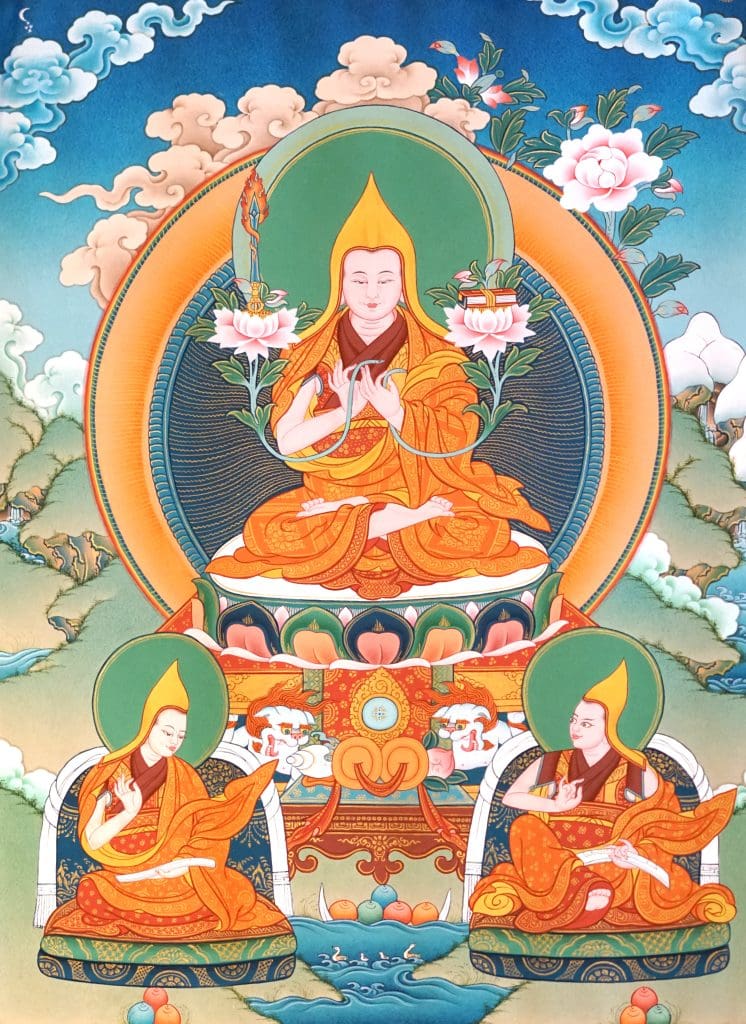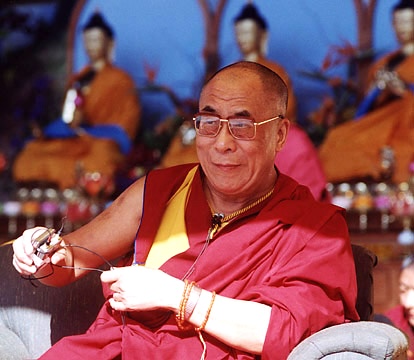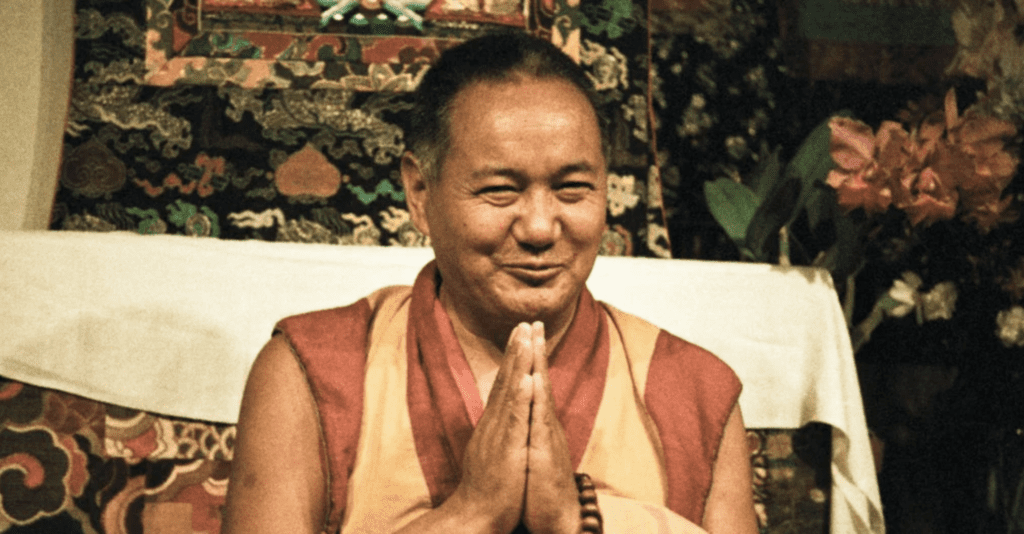Lama Tsongkhapa, Lozang Dragpa
Lama Tsongkhapa (1357–1419 C.E.) was a great scholar-monk-yogi who studied with great master of his time from all the existing schools of Buddhism of Tibet. He re-examined the texts checking things against classical Indian sources to see what was authentic and what needed to be thrown out because of errors. Through his direct communication with Manjushri, Tsongkhapa was able to clarify the intended meaning of the scriptures and commentaries on the profound topic of emptiness.
A prolific writer, he composed both poems and thick reference books which are still in active use today. If you look at how much he wrote you would think that’s all he did in his life; if you look at how much Dharma practice and retreat he did you would think that’s all he did; and if you look at his great works to benefit others, such as establishing monasteries, festivals, and holy objects, you would think that’s all he did. But in fact, he managed to fit all of these into one lifetime. The tradition he created came to be known as the Ganden Tradition, or the Gelug lineage. Our center is part of that.


At the Heart of Wisdom teachings and Medicine Buddha initiation hosted by Land of Medicine Buddha at Shoreline Amphitheater, 2001.
His Holiness the Dalai Lama
His Holiness the Dalai Lama is the greatest source of inspiration for the Foundation and therefore service to His Holiness must be one of our primary activities. Kyabje Zopa Rinpoche said:
“‘His Holiness’ Office is very happy with the organization. He has compassion you see, gives advice on things we request. Doesn’t have time but out of compassion He does the Dharma activities, creates the centers, gives teachings, like that, actually there is not time, but kindly He accepts.
“Always giving. Giving advice, looking after, much concerned. So I think we must also offer much service from time to time to His Holiness. I think this makes a connection life to life for all the students, members, directors. Those who make connection with His Holiness in this life, make connection in other, future lives, to meet His Holiness again, to be able to offer service, to be closer and closer. Through actions such as these one reaches enlightenment. It can then be achieved. It comes.”
“It’s a great thing to be able to offer service to His Holiness. To fulfill His wishes. As the organization gets developed more and more I think we will be able to offer more and more service. In this way all the centers are being beneficial for sentient beings. This is a way of creating the cause. By pleasing the guru.”

Lama Thubten Yeshe
Lama Yeshe (1935–1984) was a dynamic teacher who influenced a generation of seekers with his broken but groovy way of speaking English, having learned the language from the hippies who were flocking to India and Nepal during the 1960’s and ’70’s. Although he was Lama Zopa Rinpoche’s teacher, the two lamas were really a team, teaching and traveling together until Lama Yeshe’s all-to-early passing in 1984. Lama Yeshe had a close connection with Santa Cruz, California, teaching several courses at Vajrapani Institute, Boulder Creek, and even one semester at UCSC.
Lama Yeshe personally selected the old resort which eventually became Land of Medicine Buddha—Greenwood Lodge—the location for a new FPMT center which would be able to reach more people and would offer accessible and perhaps eclectic programs. When Lama Yeshe knew he was dying, he came back to California and was cared from by local-area Dharma students at a house they rented for him in Aptos. When he eventually passed away, his cremation – attended by many high lamas – was held at Vajrapani Institute. Lama Yeshe Wisdom Archive is a good place to find Lama Yeshe’s teachings.

At Ksitigarbha Festival, at Land of Medicine Buddha, on September 2012.
Kyabje Lama Zopa Rinpoche
Lama Zopa Rinpoche was born in Thami, Nepal, in 1946. At the age of three, he was recognized as the reincarnation of the Lawudo Lama, who had lived nearby. At age ten, Rinpoche went to Tibet, where he stayed until the Chinese occupation of Tibet in 1959 forced him into exile in India, where he met Lama Yeshe. The Lamas went to Nepal in 1967 and started teaching Dharma to Westerners. In 1974, they began traveling around the world to teach and establish centers of Dharma.
FPMT was established at the end of 1975. Lama Yeshe served as the organization’s spiritual director until he passed away in 1984, at which time Rinpoche took over. From that time until 2023, under 39 years of his peerless guidance, FPMT continued to flourish.
Our most precious guru and spiritual director, entered his final meditation on April 13, 2023 at 9:30 a.m. Nepal time.

